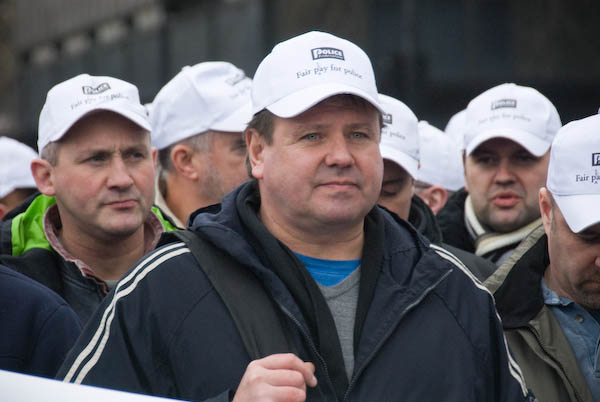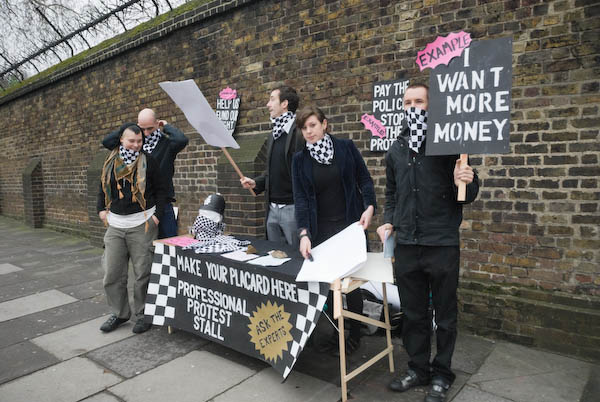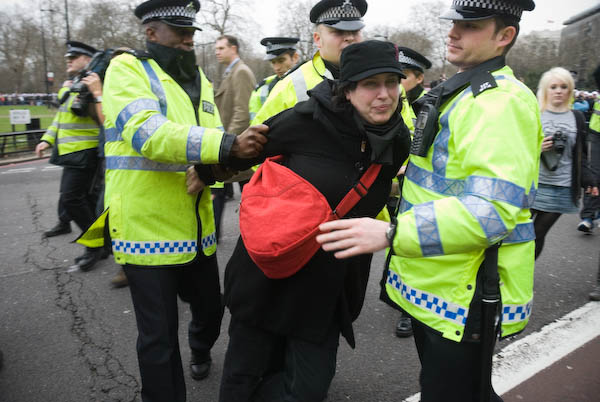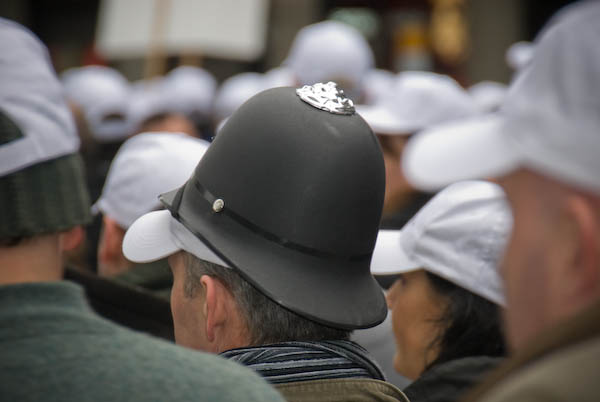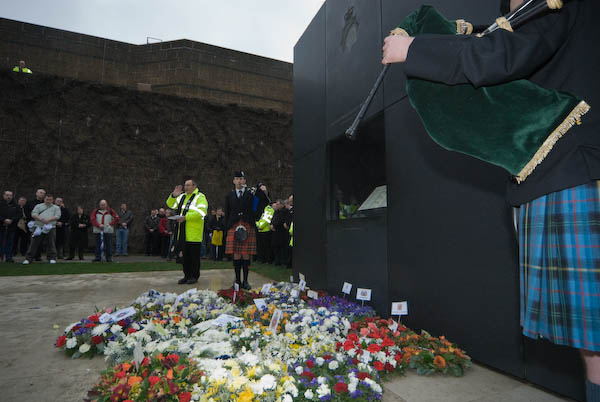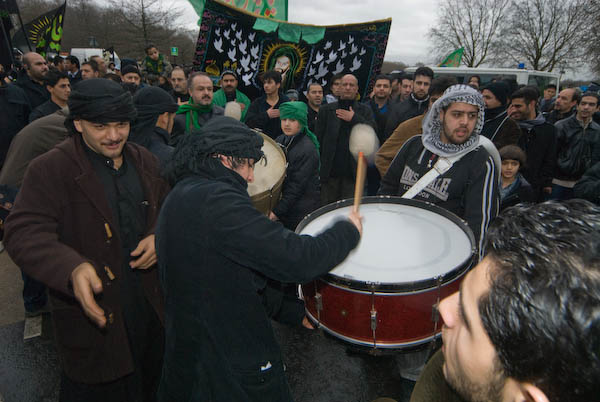For most users of the Leica M8, Cornerfix must rank as one of the most useful piece of software available, and certainly the best value since it comes free, thanks to the generosity of its writer, Sandy McGuffog.
The M8 designers found that the way to get sharper results, and to make a 1.3x size sensor usable with their wide-angle lenses was to use a thinner IR barrier filter over the sensor. When they released the camera they appear not to have realised the problems this would cause photographing in particular some black synthetic fibres.
The first job I used my M8 for included photographing a group of people demonstrating against the development of Queen’s Market in Upton Park (pictures and text are some way down the page on the link) outside a shareholders’ meeting in the City of London. Most were wearing black but these clothes were rendered nicely by the M8 in various shades of plum and brown.
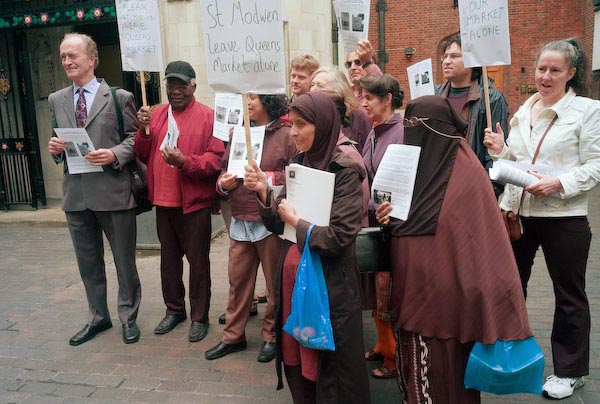
More uncorrected Leica images from this event
Careful selection of much of the black clothing in the image, darkening and slightly de-saturating it to produce a more natural result took several hours of work for a small repro fee. I’d done a quite a few test pictures before I took the camera out on this small job, but hadn’t chosen the right subjects or lighting to show how bad the problem could be.
By contrast, here is a picture taken with the Leica under similar lighting at last Saturday’s Ashura procession in London, using the same 21mm Voigtlander lens, taken and processed as described below:

No problems with colour, although rather more shadow noise from the M8 than I would like. The pictures in My London Diary were taken on a Nikon D200, which is more flexible and gives better colour although slightly less resolution.
Leica’s solution was to partly to provide a couple of free IR cut filters for the front of the lens. Apart from these being in rather short supply and slow to arrive, these were an excellent solution for 50mm and longer lenses, but gave an additional problem with wide-angles. Rays from the corner of the image came through the filter obliquely, resulting in a longer path and an over-correction, resulting in cyan vignetting at image corners.
Modern Leica lenses have a set of dots on the rear of the mount which can be in six positions and allow infrared sensors on the camera body to identify the lens. Using this information, camera firmware can correct the vignetting. Overall it’s a very good system giving better image sharpness across the frame than other cameras, but it leaves a problem for those of us who want to use non-coded lenses.
Leica will add lens codes to some older lenses (at considerable cost) but my wide angle wasn’t one of them. In any case I mostly use the considerably cheaper and more compact Cosina Voigtlander lenses. Various people soon found do-it-yourself ways to code these lenses, and for a time my old Leitz 35mm was working well this way. Then the ‘Sharpie’ marks wore off, and after wasting several hours trying to get it working again I gave up.
Cornerfix removes the need for lens coding, correcting the vignetting in software by using a simply created lens profile. It can actually do a better job than firmware as you can create different profiles for different lens apertures, though I think this isn’t really necessary.
To create a profile, you need to photograph a neutral sheet – either grey or white – filling the frame and using even light, avoiding any exposure clipping. Loading this into Cornerfix enables you to create a profile in a few seconds.
As stated, you can create profiles for different apertures, and also for different lighting conditions, however so far I’ve not really found this necessary, perhaps because the light has generally been overcast! Perhaps if we get a summer?
You need to separate out your DNG files by which lens was used, and then these can be batch processed to produce files with _CF suffixed to the name. If you are someone who changes lenses, this could be a problem. File size is also a slight issue for archiving; the _CF files with lossless compression are considerably larger, and Adobe Lightroom seems to lose the compression, producing 40Mb files compared to the original .DNG from camera at around 10Mb.
So I’m having problems in fitting Cornerfix and the processed files into my workflow and archiving. Should I archive the originals or the processed files? How do I fit this in with using Lightroom?
But Cornerfix itself couldn’t be simpler:
Shoot your white or grey card, load the image, use the Lens Profile menu to create a lens profile and save it into your cornerfix directory or elsewhere.

Most of the image settings should be left at the default unless you have good reason to alter them, but you may like to enable lossless compression:

Once you have lens profile(s) for your lens or lenses, you simply need to load the profile, then load either a single image or a batch of images for processing and let the program get on with it.

Left is input file, right is output.

Total process time on my computer is around 8 seconds.
During batch processing it writes the output to the same directory, so you should normally have copied the files onto your hard disk first. The output files are also DNG files and can be processed in any raw processor as normal.
